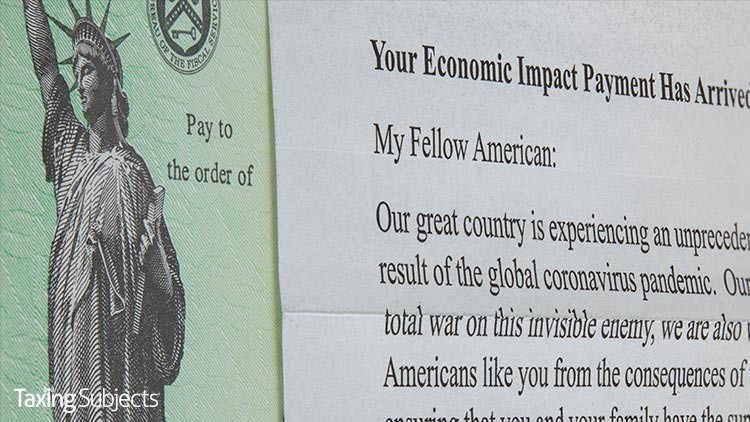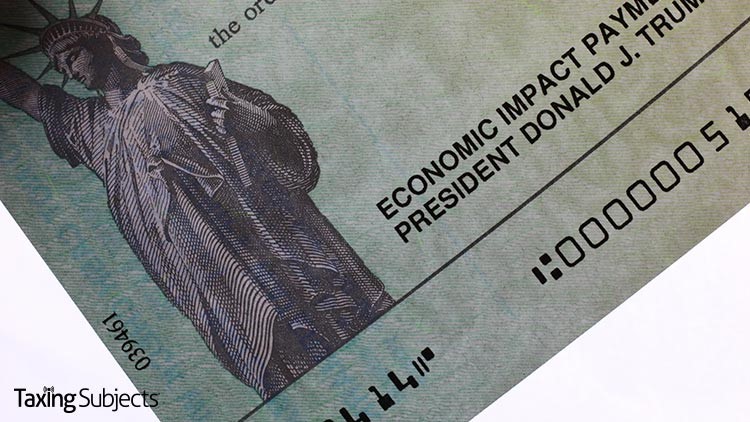by | Sep 24, 2020 | Tax Tips and News
Many Oregon taxpayers are dealing with the damage caused by recent wildfires and severe storms. While victims have been forced to flee their homes beneath a smoky, orange sky, at least they have one less thing to worry about: The looming October 15 tax extension deadline.
The Internal Revenue Service yesterday announced, “Victims of the Oregon wildfires and straight-line winds that began on September 7 now have until January 15, 2021 to file various individual and business tax returns and make tax payments.” Here’s a list of some tax-related deadlines that are affected by the relief:
- September 15 quarterly estimated income tax payments
- October 15 individual income tax extensions
- October 15 calendar-year corporation extensions
- November 2 excise tax payments
- November 16 calendar-year tax-exempt extensions
The IRS also says that “penalties on payroll and excise tax deposits due on or after September 7 and before September 22 will be abated as long as the deposits are made by September 22, 2020.” Keep in mind that this tax relief does not apply to the July 15 tax payment deadline.
Who qualifies for tax relief due to Oregon wildfires and straight-line winds?
You can qualify for the new tax extension deadline if the Federal Emergency Management Agency has officially declared where you live to be a “disaster area.” Currently, the following counties have been identified for tax relief:
- Clackamas
- Douglas
- Jackson
- Klamath
- Lane
- Lincoln
- Linn
- Marion
Be sure to bookmark “Tax Relief in Disaster Situations” on the IRS website for the most up-to-date list of affected areas. As with other natural disasters, the areas eligible for relief may grow depending on the path taken by the fire and storms. Even if no further damage is caused, FEMA can still continue to identify areas for relief as they continue surveying the situation.
What do I have to do to qualify for wildfire tax relief in Oregon?
If the address on record with the IRS falls inside a disaster area, you don’t have to do anything to benefit from the new deadlines. That isn’t to say that people won’t receive late-filing notices from the IRS. In that case, the IRS says “the taxpayer should call the number on the notice to have the penalty abated.”
Relief workers, charities, and taxpayers who have business dealings inside the disaster area may also qualify for tax relief. These individuals and organizations will need to call 866.562.5227 to speak with IRS representatives to receive tax relief.
Is tax relief available for other disaster areas?
Since hurricanes, tornadoes, and earthquakes seem to be a permanent fixture in national headlines, it’s important to remember that this tax relief generally becomes available whenever any large-scale natural disaster strikes. If you are the victim of a recent natural disaster, visit the IRS disaster relief page to see if your area has received tax relief.
Source: IR-2020-215
– Story provided by TaxingSubjects.com
by | Sep 24, 2020 | Tax Tips and News
Some nine million letters are being sent later this month in a special mailing to people who haven’t had a need to file a tax return but may qualify for a Economic Impact Payment (EIP). The letters will encourage them to see if they’re eligible for an EIP.
The notices also let the recipients know there’s an Oct. 15 deadline to register for an EIP, and they can use the special Non-Filers: Enter Payment Info Here tool on IRS.gov to do it.
“The IRS continues to work hard to reach people eligible for these payments,” said IRS Commissioner Chuck Rettig. “These mailings are the latest step by the IRS to reach as many people as possible for these important payments. We are releasing this state-by-state information so that state and local leaders and organizations can better understand the size of this population in their communities and assist them in claiming these important payments. Time is running out to claim a payment before the deadline.”
The letters are part of a final stage of the IRS’s outreach and public awareness campaign on the Economic Impact Payments that started in March. The effort included IRS reaching out to thousands of partner groups across the country—including partner groups working with underserved communities, people experiencing homelessness, and those whose primary language isn’t English.
So far, the IRS says some seven million people have already used the Non Filers Tool to register for a payment.
The September letters will be sent from an IRS address and will be sent to people who haven’t filed a return for either 2018 or 2019. IRS research shows these are people who don’t typically have a tax return filing requirement because they appear to have very low incomes based on Forms W-2 and 1099, and other third-party statements available to the IRS.
The IRS cautions that receiving a letter is not a guarantee of eligibility. An individual is likely eligible for an Economic Impact Payment if they:
- are a U.S. citizen or resident alien;
- have a work-eligible Social Security number; and
- can’t be claimed as a dependent on someone else’s federal income tax return.
For more information on eligibility requirements, see the Economic Impact Payment eligibility FAQs on IRS.gov.
The IRS has released a state-by-state breakdown of the non-filer letters to be mailed. California leads the pack with 1.18 million letters to be received by the state’s citizens. Wyoming and Vermont hold down the smallest part of the spectrum, with 14,000 and 13,000 recipients respectively.
Who needs to file?
The IRS emphasizes that anyone required to file either a 2018 or 2019 tax return should file the tax return and not use the Non-Filers Tool. The online tool is designed for people with incomes typically below $24,400 for married couples, and $12,200 for singles. This includes couples and individuals who are homeless.
Those unable to access the Non-Filers Tool may submit a simplified paper return following the steps described in the Economic Impact Payment FAQs on IRS.gov.
Anyone using the Non-Filers Tool can speed up the arrival of their payment by choosing to receive it by direct deposit. Those not choosing this option will get a check.
Beginning two weeks after they register, people can track the status of their payment using the Get My Payment tool, available only on IRS.gov.
– Story provided by TaxingSubjects.com
by | Sep 24, 2020 | Tax Tips and News
American agriculture is in the grip of a major drought, with many farmers and ranchers forced to sell off major portions of their herds to avoid starvation.
While the Internal Revenue Service can’t make it rain, the IRS can give struggling livestock producers other kinds of relief.
New measures give producers more time to replace the livestock they were forced to sell off while deferring tax on gains from the forced sales.
Who qualifies?
To qualify for relief, the farm or ranch must be in a county or other jurisdiction that’s been designated eligible for federal assistance, or contiguous to a designated county. Notice 2020-74 lists applicable regions in some 46 states, the District of Columbia, and four U.S. territories.
Generally, the relief applies to capital gains realized by eligible farmers an ranchers on sales of livestock held for draft, dairy, or breeding purposes. Sales of other livestock – such as animals raised for slaughter or held for sporting purposes, or poultry – aren’t eligible.
Qualifying sales must be solely due to drought, flooding, or some other severe weather that caused the region to be designated as eligible for federal assistance.
Livestock generally has to be replaced within a four-year period, rather than the usual two-year period. The IRS is also authorized to extend the replacement period even more if the drought continues.
The notice outlines that the one-year extension gives eligible producers until the end of the tax year after the first drought-free year to replace livestock lost in forced sales. Details – including an example of how the provision works – is available in Notice 2006-82, available on IRS.gov.
What is the window of eligibility?
The IRS provides the extension to farms and ranches located in the applicable region that qualified for the four-year replacement period if any county included in the applicable region is listed as suffering exceptional, extreme or severe drought during any week between Sept. 1, 2019, and Aug. 31, 2020.
The determination is made by the National Drought Mitigation Center.
The upshot of all this is that qualified farmers and ranchers whose drought-sale replacement period was slated to expire at the end of this year, Dec. 31, 2020 in most cases, now have until the end of their next tax year.
Because the normal drought-sale replacement period is four years, the extension immediately impacts drought sales that took place in 2016. The replacement periods for some drought sales before 2016 are also affected, due to previous drought-related extensions affecting some of those localities.
For more information on reporting drought sales and other farm-related tax issues, check out Publication 225, Farmer’s Tax Guide, on IRS.gov.
Source: IR-2020-219
– Story provided by TaxingSubjects.com
by | Sep 12, 2020 | Tax Tips and News
The Internal Revenue Service has good news for practitioners and taxpayers who speak a language other than English: Tax information and assistance is being translated into more languages than before.
The language upgrade features a big boost to Spanish speakers, who will find the Form 1040 now in Spanish.
In addition to being available in English and Spanish, the 2020 Form 1040 will also give taxpayers the opportunity to indicate whether they prefer to be contacted in a language other than English – a new feature that’s available for the first time next filing season.
There are other changes to popular publications as well. Publication 1, Your Rights as a Taxpayer, is now available in 20 different languages. An updated version of Publication 17, Your Federal Income Tax, will be available early next year in seven languages, including English, Spanish, Vietnamese, Russian, Korean and Chinese.
The expanded language availability is part of the agency’s effort to reach its goal of helping everyone – no matter where they live, what their background is, or what language they speak.
“Our diverse workforce is extremely proud to be able ease the inherent burden on taxpayers attempting to voluntarily comply with their tax responsibilities, including people who are more comfortable with other languages,” said IRS Commissioner Chuck Rettig. “We are continually increasing the information and services available in other languages as well as expanding our interpreter services so that we can interact in a more respectful manner with taxpayers in their most comfortable language. We expect to continue these important efforts as we work to earn the trust and respect of every American.”
As part of the expansion, many of the webpages on the IRS.gov site are now available in seven languages; basic tax information is now available in 20 languages on IRS.gov.
Taxpayers who interact with an IRS representative now have access to over-the-phone interpreter services in more than 350 languages.
The IRS has also recently started to insert information about translation services and other multilingual options into high-volume notices sent out to taxpayers.
The IRS is raising the language bar.
While assistance has long been provided in Spanish and some other languages, the IRS is increasing the number of materials available in multiple languages. It’s also expanding its outreach with multilingual community partners.
The agency recently worked with partners in the tax and low-income communities and provided them with information and resources that they quickly translated and made available in some 35 languages. The material promoted the Economic Impact Payments.
The success of the effort has led the IRS to continue the work on other agency priorities, including the 2021 filing season.
In the coming months and years, the IRS says it will continue to expand the availability of the most widely used forms and publications in multiple languages. Plans also include increasing the number of web pages on IRS.gov that are accessible in seven languages later this year.
– Story provided by TaxingSubjects.com
by | Sep 10, 2020 | Tax Tips and News
The Internal Revenue Service says it will start sending out letters this month to a group of taxpayers that may have missed out on receiving Economic Impact Payments (EIPs).
The letters, aimed at some 9 million Americans who don’t normally file a federal income tax return, notify them that they may be eligible for an EIP—but they must register in order to claim one.
These taxpayers have until October 15 to register their claim so they can receive a payment by the end of the year.
Individuals can receive up to $1,200, and married couples can receive up to $2,400. People with qualifying children who were under age 17 at the end of 2019 can get up to an additional $500 for each qualifying child.
Non-Filers can still qualify for an Economic Impact Payment!
The IRS is sending letters to people who haven’t filed a tax return for either 2018 or 2019. This includes those who don’t typically have a filing requirement because they appear to have very low incomes based on W-2s, 1099s, and other third-party statements available to the IRS. Despite the lower incomes though, many of these people are still eligible for an Economic Impact Payment.
“The IRS has made an unprecedented outreach effort to make sure people are aware of their potential eligibility for an Economic Impact Payment this year,” said IRS Commissioner Chuck Rettig. “Millions who don’t normally file a tax return have already registered and received a payment. We are taking this extra step to help Americans who may not know they could be eligible for this payment or don’t know how to register for one. People who aren’t required to file a tax return can quickly register on IRS.gov and still get their money this year.”
The letter, termed Notice 1444-A by the IRS, is written in both English and Spanish. The mailing is expected to start around September 24 and will go out from an IRS address. To help address fraud concerns, a copy of the letter will be available on IRS.gov.
Go online to register.
The letter urges eligible individuals to register by October 15 for a payment by using the free Non-Filers: Enter Payment Info Here tool.
Over 7 million people have used the Non-Filers Tool so far to register for their payment. If a person is unable to access the Non-Filers Tool they can submit a simplified paper return using the procedures outlined in the Economic Impact Payments FAQs on IRS.gov.
It should be noted that simply receiving a letter is not a guarantee that the recipient will get an Economic Impact Payment.
The IRS puts the qualifications this way: “An individual is likely eligible if he or she is a U.S. citizen or resident alien; has a work-eligible Social Security number; and can’t be claimed as dependent on someone else’s federal income tax return. However, there can be a variety of situations that could affect an individual’s eligibility.”
For information on the EIP eligibility requirements, check out the Economic Impact Payment eligibility FAQs on IRS.gov.
The registration deadline for non-filers to claim an Economic Impact Payment using the Non-Filers Tool is Oct. 15, 2020. If they cannot make the deadline, people can also wait until next year and claim the credit amount on their 2020 federal income tax return by filing in 2021.
Taxpayers who are required to file either a 2018 or a 2019 tax return should file the return but should not use the Non-Filers Tool.
– Story provided by TaxingSubjects.com





